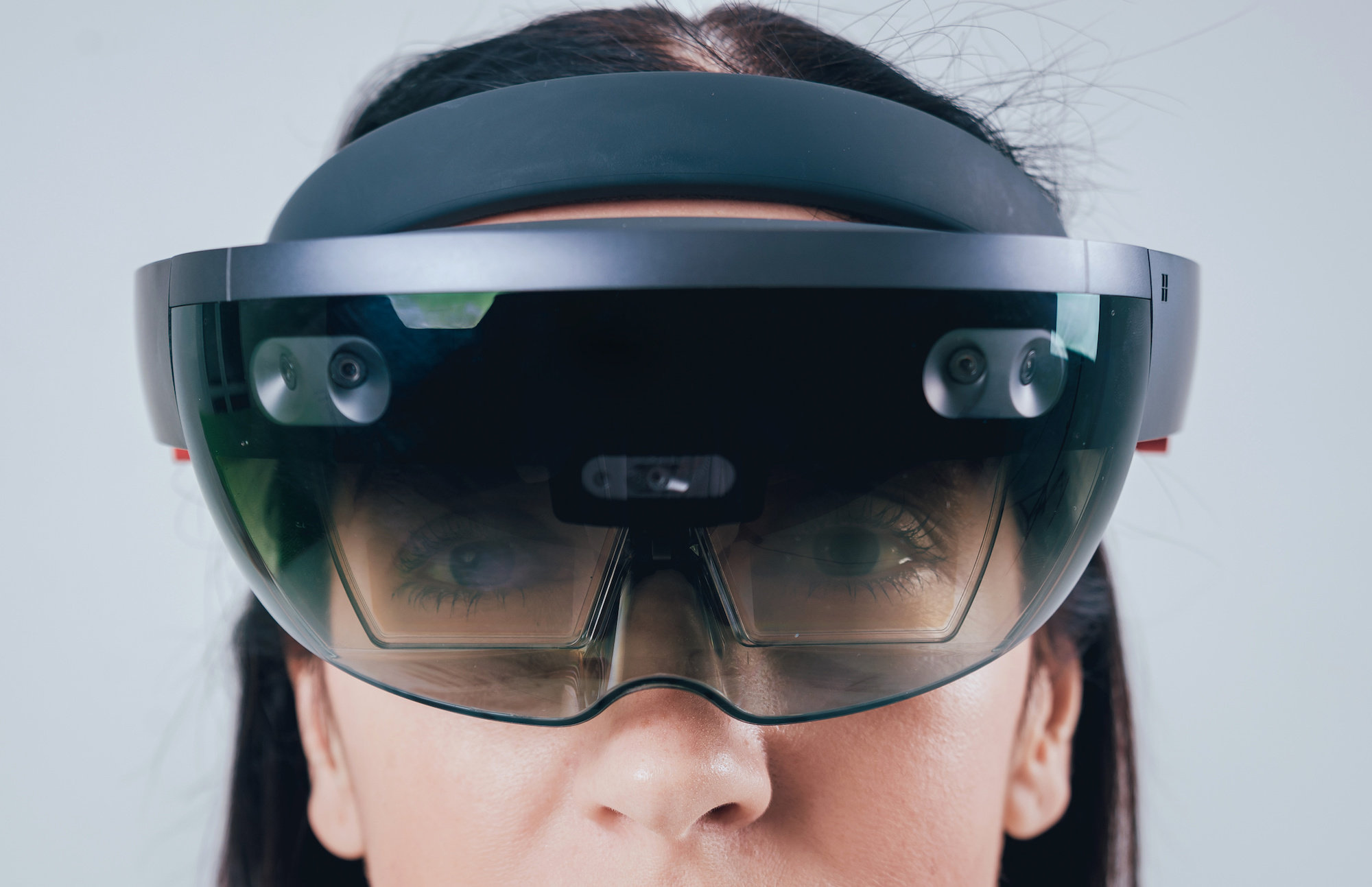Augmented Reality (AR) is an innovative technology that overlays digital information, such as virtual objects, images, or videos, onto the real world. It enhances our perception of reality by blending the physical and digital realms seamlessly. From gaming and entertainment to education and healthcare, AR has the potential to transform various industries and significantly impact our personal lives. In this article, we will explore the concept of Augmented Reality as a technology, its current implications for businesses, and the promising opportunities it presents for the future. But what actually is AR?
Augmented Reality in a nutshell:
Augmented Reality involves using computer-generated sensory inputs, such as visuals, sounds, or haptic feedback, to enhance the real-world environment. It typically relies on devices like smartphones, tablets, smart glasses, or headsets to deliver the AR experience. By leveraging technologies like computer vision, depth sensing, and object recognition, AR applications can identify and track real-world objects, enabling users to interact with virtual elements in real-time.
Implications for Business Today:
AR has already started to revolutionize various industries, offering unique advantages for businesses. Some key implications of AR in the present include:
-
Enhanced Product Visualization: AR allows customers to visualize products in their own environment before making a purchase. This capability is particularly valuable for e-commerce platforms, furniture retailers, and home improvement companies.
-
Improved Training and Education: AR enables interactive and immersive learning experiences, making it an effective tool for training employees in complex tasks or educating students through interactive simulations.
-
Streamlined Maintenance and Repair: AR can provide technicians with real-time instructions, overlays, and annotations, simplifying maintenance and repair processes. This capability improves efficiency, reduces errors, and lowers training costs.
-
Engaging Marketing Campaigns: Brands can leverage AR to create interactive and memorable marketing campaigns, allowing customers to engage with products and experiences in innovative ways, thus increasing brand awareness and customer engagement.
Future Opportunities to be considered:
The future of Augmented Reality holds immense potential, with several exciting opportunities waiting to be explored. Here are some key areas where AR could play a transformative role:
-
Augmented Retail: AR can revolutionize the retail industry by offering personalized shopping experiences, virtual try-ons, and interactive product displays. Virtual shopping assistants and AR-powered smart mirrors could become commonplace, enhancing the overall customer journey.
-
Remote Collaboration: AR can facilitate remote collaboration by overlaying virtual elements onto real-world settings. Professionals across industries, such as architects, engineers, and doctors, could collaborate seamlessly, regardless of their physical location.
-
Healthcare and Telemedicine: AR has the potential to revolutionize healthcare by providing surgeons with real-time patient data during operations, assisting in diagnosis, and enabling remote consultations with specialists, thus improving patient outcomes and expanding access to healthcare.
-
AR in Entertainment and Social Media: As AR technology advances, we can expect more immersive gaming experiences, where virtual objects and characters seamlessly interact with the real world. AR can also enhance social media platforms, allowing users to share personalized and interactive content.
Future Trends and Ubiquity:
As AR technology evolves and becomes more accessible, we can envision a future where it permeates our daily lives. Here are some future trends and potential scenarios:
-
Wearable AR Devices: Compact and stylish AR glasses or contact lenses could replace traditional screens and devices, integrating digital information seamlessly into our field of view.
-
Internet of AR: The convergence of Augmented Reality and the Internet of Things (IoT) could create a network of interconnected smart devices, enabling a highly personalized and context-aware AR experience.
-
Personalized Information Overlay: AR could provide personalized information in real-time, displaying relevant details about people, places, and objects as we interact with them, making our interactions more informed and efficient.
-
AR as a Universal Interface: AR could become the primary interface for interacting with digital services and smart environments, eliminating the need for traditional screens and physical controls.
Augmented Reality has already demonstrated its transformative potential in various industries, and its future opportunities are truly exciting. As businesses continue to adopt AR, we can expect improved customer experiences, streamlined processes, and innovative marketing campaigns. In our personal lives, AR has the potential to revolutionize the way we shop, learn, and interact with the world around us. With ongoing advancements and increasing ubiquity, Augmented Reality is set to reshape our reality, blurring the lines between the physical and digital realms, and opening up endless possibilities for both individuals and companies alike.




Comments